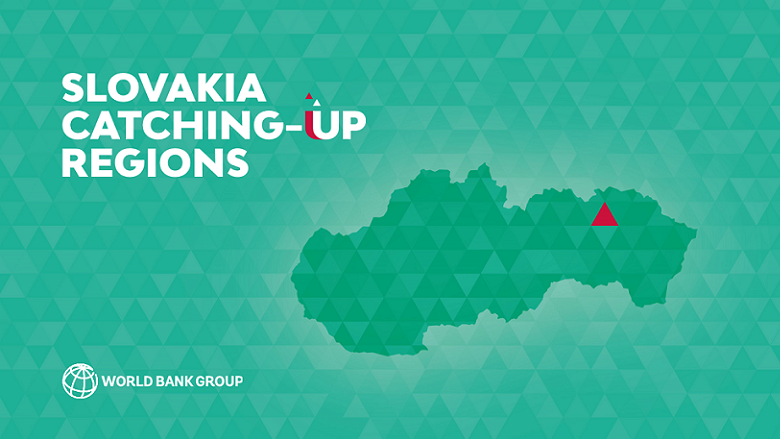Slovakia Catching-up Regions Initiative (CuRI) aims at providing hands-on technical support to less developed regions in the Slovak Republic to overcome selected developmental bottlenecks identified by regional authorities. The Initiative was launched in mid-2018 by the European Commission and implemented in collaboration with the authorities of self-governing regions, national-level actors coordinated by the Ministry of Investments, Regional Development and Informatization of the Slovak Republic, and the World Bank.
The overarching objective of this initiative is to attain tangible goals by supporting regions in enhancing their capacity and designing and piloting specific solutions.
Building on the successful implementation of CuRI’s first annual phase, the next phase (CuRI2) was launched in mid-2019 and lasted through Dec 2020. It expanded the thematic and geographic scope of the Initiative. CuRI2 included three regions: Košice, Prešov and Banská Bystrica Self-Governing Regions. The below reports describe main results in the different thematic areas.
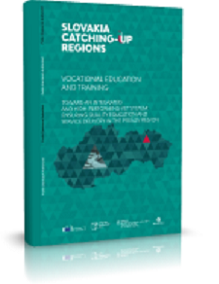
DOWNLOAD in English | DOWNLOAD in Slovak
This summary report aggregates three activities conducted in the Presov region under the second phase of the catching-up region initiative. For this particular activity within the initiative, the Ministry of Education is another key thematic partner. The second year focused on establishing frameworks for quality assurance and school network optimization to improve quality, efficiency, and relevance of the vocational education and training (VET) programs. This summary report combines shortened versions of three reports that were developed in the Presov region during year 2 of the CuRI: 1) a write-up of the investment package preparation workshop; 2) the VET secondary schools quality assurance framework; and 3) the VET secondary schools school network optimization framework.
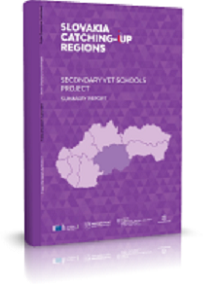
DOWNLOAD in English | DOWNLOAD in Slovak
This document summarizes the methodology, findings, recommendations, and discussion from the main report, as well as background context on the Slovak Republic catching-up regions initiative. The initiative seeks to address the development challenges of low-income regions in the eastern periphery of the EU. Two main concerns exist within these low-income regions: 1) the long-term sustainability of their growth, and 2) the need to avoid the development trajectory of the low-growth areas. There are three overall objectives of this initiative in the targeted regions: explore and promote regional development opportunities; assist, and build capacity to pursue European financial support; and encourage the competitiveness of businesses.
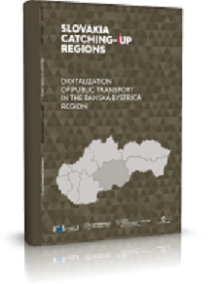
DOWNLOAD in English | DOWNLOAD in Slovak
This report was written to support the work under the catching-up regions initiative in addressing the needs of the Banska Bystrica self-governing region (BBSK). The BBSK’s presented public transport digitalization initiative fits into broader digital government and smart city policy developments in the Slovak Republic and is fully in line with the World Bank’s advisory support in this area. This report provides both a strategy for implementing the presented BBSK project, and an analysis of user needs and of digital literacy in the BBSK area. It analyzes the travel behavior and needs of the region’s residents and visitors, using data gathered by the World Bank from various official sources, for general travel patterns within the BBSK.
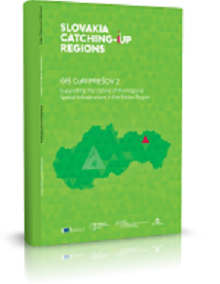
DOWNLOAD in English | DOWNLOAD in Slovak
This report summarizes the activities under the second phase of the regional spatial data infrastructure for the Prešov region. The activities focused on supporting the region in operationalizing and building the capacity of its geographic information system (GIS) unit, deploying a regional spatial data infrastructure (SDI), and ensuring the production, management, and availability of required geospatial data (as open data) in priority sectors. One of the most important achievements of the project was to identify and start to respond to the data demand in order to foster the uptake of the special data infrastructure.
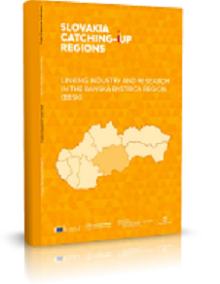
DOWNLOAD in English | DOWNLOAD in Slovak
The report includes findings and recommendations for the Banská Bystrica region and selected sectorial ministries of the Slovak Republic in the area of supporting closer collaboration between industry and public research organizations. The World Bank’s support has a twofold goal under the R&D component: (i) an assessment of the Banská Bystrica region’s innovation environment, and (ii) assistance in removing barriers to financing for the Banská Bystrica region companies engaging in R&D collaboration. The report recommends that the Banská Bystrica region implement three specific solutions to help better coordinate innovation policy in the region and mitigate some of the shortcomings of the research, development, and innovation support system.
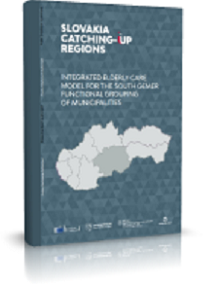
DOWNLOAD in English | DOWNLOAD in Slovak
Elderly care is an area of growing importance for the Slovak Republic. The national system for health and social care does not offer a framework of integrated elderly care provision. This report presents a model of integrated elderly care that was developed as a joint effort of the World Bank and the Banská Bytrica region under the catching-up regions initiative. The South Gemer functional grouping of municipalities was selected as a pilot through a rigorous screening and consultation process. The presented model is entirely in line with the existing legislation of the Slovak Republic. The changes to the national system and legislation that can simplify integration of care are provided in this report as preliminary proposals. The presented model will seek to improve the experience of the elderly, while also offering a financially and institutionally sustainable way of providing elderly care.
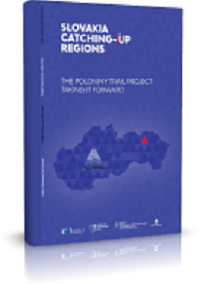
DOWNLOAD in English | DOWNLOAD in Slovak
The COVID-19 crisis has brought to a halt a decades-long growth trend in tourism throughout the world. As countries start reopening their borders tourism is expected to resume its contribution to the global economy. The primary challenge is twofold. First, tourists in Snina, both domestic and international, are presently limited in number. Second, high-spending domestic and international tourists are especially sparse. This report offers a phased approach to planning and developing a trail network in the Poloniny National Park, incorporating and improving the sections of trail that already exist. The new trail network has a potential be connected to the Polish and Ukrainian sides of the National Park and its attractions.
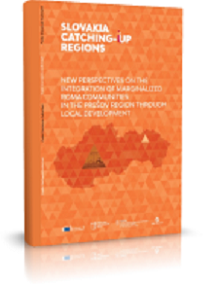
DOWNLOAD in English | DOWNLOAD in Slovak
The report provides an overview of activities, conclusions, and recommendations resulting from the implementation of the component Better Project Management: integration of marginalized Roma communities under catching-up regions initiative II in the Prešov region. The implementation of this component showed the importance of an integrated approach in supporting municipalities. However, the effectiveness of local development plans is reduced if they are not matched with integrated financing opportunities. Often municipalities struggle with the identification and acquisition of well-located land that will be suitable for new construction projects. To avoid abuse and standardize the application, it is recommended that as part of the new strategy for Roma integration, a nationwide analysis be undertaken, which should be done in tandem with an accelerated land settlement project.

